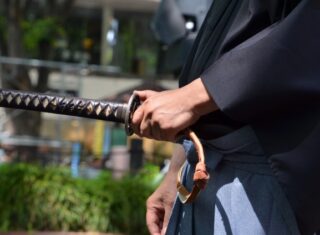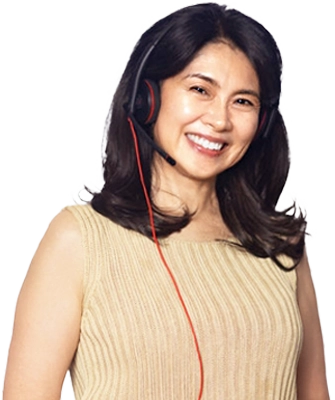- Learning Japanese
- Japanese Culture
Which Japanese Learning Service is the Best? A Comprehensive Comparative Analysis
2025.01.14
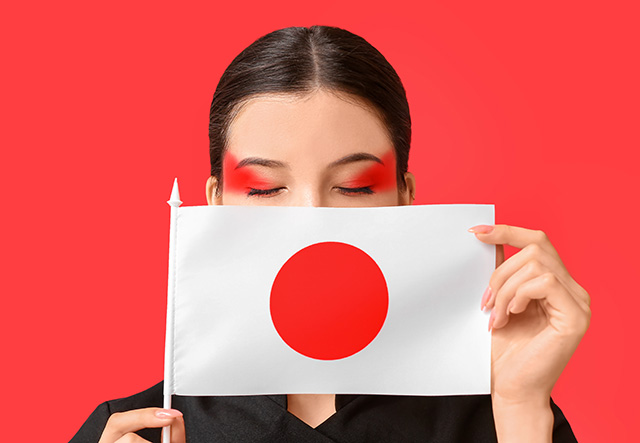
Introduction: The Challenge of Choosing the Right Platform for Learning Japanese
Hello, I’m Yui Oku from OSJ, an online Japanese language learning school.
Are you finding yourself endlessly searching through countless articles, websites, apps, blogs, and forums wondering, “Which Japanese learning service is the best?”
Someone might recommend one platform, while another person swears by a different one. Yet, none of the Japanese learning platforms you’ve tried so far feel like the perfect fit.
Perhaps you’re deeply motivated to learn Japanese, finding it fascinating, but at the same time, you’re frustrated by a lack of progress.
I completely understand how you feel.
There’s an overwhelming amount of information out there, and with so many ads and platforms vying for your attention, it’s easy to get lost. You may have tried one Japanese learning app, program, or lesson after another, only to be disappointed when they fail to live up to expectations.
You don’t need to scour endless blogs anymore. You don’t need to keep trying app after app only to be left without results.
By reading this article, I promise you’ll discover the Japanese learning program that can deliver the results you’ve been looking for.
Comprehensive Comparison of Top Platforms

There are countless platforms available for learning Japanese, from tools specialized in conversation to apps focused on kanji learning. However, we’ll narrow it down to seven of the most prominent platforms: Preply, iTalki, WaniKani, Duolingo, SNG, Akamonkai, and Oku Sensei’s Japanese (OSJ).
Each platform is evaluated based on its strengths, weaknesses, and suitability for learners at different levels. By comparing these platforms, you’ll be able to determine which one aligns best with your learning goals and provides the most value for your time and effort.
First, take a look at the summary chart below to get an overview of each platform.
|
Service name |
Category |
Strength |
Weakness |
Best suited for |
|---|---|---|---|---|
|
Private Lessons |
- Affordable pricing - Flexible scheduling - Diverse tutor options - Excellent for conversation practice |
- Variable tutor quality - No structured study plans - Challenging for beginners - Limited tutor screening |
Intermediate to advanced learners with strong self-management skills |
|
|
Private Lessons |
- Excellent for conversation practice - Flexible lessons - Access to global language partners |
- Limited beyond conversation - No structured lessons - Challenging for beginners - Variable tutor quality |
Intermediate to advanced learners focusing on improving speaking skills |
|
|
App |
- Efficient and specialized kanji learning - Intuitive design - Systematic approach to kanji components |
- Lack of contextual learning - Not a comprehensive language education - Limited practical application |
Learners focusing on kanji as part of a broader strategy |
|
|
App |
- Beginner-friendly - Gamified learning experience - Low-pressure introduction to language learning |
- Over-simplified content - Limited to beginner levels - Lacks practical application - Few cultural insights |
Absolute beginners seeking a casual introduction |
|
|
In-Person School |
- Accredited institution - JLPT and business Japanese preparation - Offers apps for grammar and kanji |
- Rigid schedules - Limited online options - Over-reliance on tests and workbooks - Mixed-ability classes |
Self-motivated learners aiming for academic or JLPT success |
|
|
In-Person School |
- Intensive curriculum - Strong reputation - Diverse courses for specific needs |
- Requires residence in Japan for most programs - Fixed teaching styles - High combined class and living costs - Few online options |
Learners seeking immersive and intensive language programs |
|
|
Online School |
- Comprehensive curriculum - Guaranteed results at affordable prices - Focus on practical Japanese and cultural integration - Flexible schedules with structured lesson plans - Thorough guidance and care for students |
- No in-person classes - No private lessons - Only one instructor - Limited available time slots |
Learners at any level seeking practical and comprehensive Japanese skills online |
Preply and iTalki
Preply and iTalki are excellent choices for learners who want to practice speaking and already possess a certain level of Japanese proficiency. However, they are less suitable for intermediate and beginner learners who need to build a solid foundation in Japanese from the ground up, as well as those wishing to study the language alongside Japanese customs, history, culture, and art.
Furthermore, for individuals aiming to use business Japanese or achieve high levels on the JLPT (N1 or N2), these platforms may not be the most economical or efficient options.
WaniKani and Duolingo
WaniKani is well-suited for kanji learning, while Duolingo is a great tool for beginners to learn Japanese in a fun, gamified way. However, neither platform offers a comprehensive approach to mastering practical Japanese or achieving fluency.
As such, WaniKani works well as a supplemental tool for practicing kanji but should not be the centerpiece of your Japanese learning strategy. Similarly, Duolingo is a great beginner-friendly tool for getting a feel for learning Japanese, but once the basics are mastered, learners will need to switch to another method to acquire practical Japanese skills.
SNG, Akamonkai, and OSJ
SNG, Akamonkai, and OSJ are more comprehensive options, catering to a wide range of proficiency levels from beginner to advanced. These schools cover all aspects of Japanese learning, including reading, writing, speaking, listening, kanji, vocabulary, and grammar.
However, SNG and Akamonkai primarily focus on in-person classes in Japan. This means learners must cover not only tuition but also additional costs such as travel, accommodation, local transportation, and other living expenses. While they do offer some online courses, these options are limited and lack the immersive and comprehensive advantages of their in-person programs.
Moreover, the curriculums at SNG and Akamonkai rely heavily on textbooks and workbooks, which can oftentimes make it challenging for students to translate their knowledge into practical Japanese skills. For those with the financial means to live in Japan for several months and seeking an immersive experience, SNG and Akamonkai could be excellent options.
For those looking to acquire practical Japanese skills efficiently and affordably, OSJ (Oku Sensei’s Japanese) clearly stands out as the best overall choice.
With OSJ, learning is accessible online, so students can take lessons from the comfort of their own homes without needing to relocate to Japan. Moreover, OSJ distinguishes itself with its practical and comprehensive Japanese education, guaranteed class and instructor quality, affordable pricing, flexible class structures, long-term student support, and overall effectiveness.
This unique combination allows students to achieve tangible results in a short period of time without incurring high costs or wasting time on inefficient methods.
There’s no longer any need to search the internet endlessly, wondering which platform is the best fit for you. The rest of this article will provide a detailed comparison of the seven major platforms mentioned above.
Comparison of Preply and iTalki

Preply and iTalki are two leading platforms connecting language learners with tutors worldwide. While they share common features, there are important differences and limitations to consider.
1. Languages Offered
- iTalki: Supports over 150 languages, including less commonly taught ones.
- Preply: Offers around 117 languages, with a strong focus on popular options like English, Spanish, and French.
Note: For languages like Japanese, many tutors are available; however, there are significant variations in quality, especially when it comes to teaching beginners, where specialized skills are essential.
2. Tutor Qualifications
- iTalki: Categorizes tutors into “Professional Teachers” (qualified and experienced educators) and “Community Tutors” (fluent speakers without formal teaching credentials).
- Preply: Allows anyone to register as a tutor, regardless of their teaching experience or qualifications.
Comparison: iTalki’s distinction between “Professional Teachers” and “Community Tutors” is a strong point. However, lessons with “Professional Teachers” can cost up to $80 per hour. On both platforms, the open-entry tutor pools often lead to inconsistencies in teaching quality. For beginners, this can make learning difficult, as many tutors lack the skills to clearly explain grammar and sentence structure.
Analogy: Asking an untrained tutor to teach Japanese is like asking someone without ESL training to teach English grammar—it’s likely to be ineffective for beginners.
3. Pricing and Payment
- iTalki: Lessons range from $4 to $80 per hour, with a flat 15% commission deducted from tutors.
- Preply: Lessons range from $1 to $40 per hour, with a tiered commission structure that decreases as tutors complete more lessons (starting at 33%).
Challenge: Both platforms are affordable and offer pricing flexibility. However, this model often attracts tutors who teach as a part-time side job, limiting the availability of experienced, full-time educators.
4. Booking and Structured Learning
- iTalki: Allows flexible booking of individual lessons or lesson packages.
- Preply: Requires upfront purchases of lesson packages (e.g., 6, 12, or 20 hours), promoting consistent study but limiting flexibility.
Note: Both platforms feature user-friendly scheduling systems that are highly flexible, with options across various time zones, durations, and lesson lengths. While “lesson packages” offer slight discounts, they do not include comprehensive or structured learning plans. Instead, learners must design their own curricula, which can lead to inefficient study habits, gaps in understanding, and loss of motivation—particularly for beginners who need clear guidance.
5. Trial Lessons and Support
- iTalki: Offers discounted 30-minute trial lessons to assess tutor compatibility.
- Preply: Provides similar trial sessions, along with a satisfaction guarantee allowing students to switch tutors if needed.
Challenge: Both platforms’ trial systems focus on students evaluating tutors, not the other way around. This poses challenges for beginners and intermediate learners who may not fully understand their own level or how to judge a tutor’s effectiveness. Without an experienced tutor to assess a student’s abilities, strengths, weaknesses, and goals, learning progress can stagnate.
This lack of guidance means that students are often left to determine what and how to study themselves. If progress stalls, the responsibility falls entirely on the student, as they created the lesson plans and content requests—not the tutor.
Conclusion
If your goal is to enhance your Japanese speaking ability from an intermediate to advanced level, iTalki is an excellent choice due to its wide range of prices, availability of professional teachers, and flexible scheduling.
However, while Preply and iTalki excel in providing affordable and flexible conversation practice, their reliance on independent, often part-time tutors creates inconsistencies in teaching quality. For beginners, the lack of structured learning plans and support in areas like grammar, reading, and writing can present significant challenges.
Both platforms are great for conversation practice, but for mastering Japanese—a complex language—these lessons must be combined with structured programs or guidance from
WaniKani vs. Duolingo

WaniKani and Duolingo are popular platforms for learning Japanese, each offering unique approaches and features. Below is an overview of their strengths and limitations:
1. Focus and Content
- WaniKani: Specializes in kanji and related vocabulary using a mnemonic-based system. It covers approximately 2,000 kanji and 6,000 vocabulary words, aiming to enhance literacy by focusing on individual character recognition and meaning.
- Duolingo: Provides a broader introduction to Japanese, covering basic vocabulary, phrases, and simple grammar. Its gamified lesson structure makes language learning enjoyable and accessible, catering to various aspects of the language at an introductory level.
While WaniKani and Duolingo excel in their niches, neither can replace structured programs for learning Japanese. Both are relatively effective as supplemental tools but lack practical applications and real-world context, making them unsuitable as the core of a Japanese learning strategy.
2. Learning Approach
- WaniKani: Uses a structured spaced repetition system (SRS) to reinforce kanji learning. Mnemonics assist with memorization, and the SRS ensures timely reviews to improve retention.
- Duolingo: Employs interactive exercises, such as translation, matching, and listening tasks, to teach language concepts. Its gamified approach encourages daily practice through rewards and streaks, fostering consistent engagement.
These features are the strongest aspects of WaniKani and Duolingo. WaniKani’s SRS system effectively reinforces kanji memory by building mental connections with associated information. Duolingo’s gamified experience makes learning enjoyable for beginners and helps establish healthy study habits, such as consistent daily practice, while aiding in memorizing simple Japanese language concepts.
3. User Experience and Interface
- WaniKani: Offers a clean and straightforward interface tailored to kanji lessons and reviews. Progression is linear, with new content unlocked as previous levels are mastered, providing a clear sense of advancement.
- Duolingo: Features a colorful, game-like interface with various lesson modules. Learners can select topics and skills, adding variety to the gamified exercises.
Both apps encourage use through levels, streaks, and rewards, making them enjoyable and helping build healthy study habits. However, this often leads to a false sense of progress. Many Duolingo users realize after months of usage that they have gained little practical Japanese skill. Similarly, WaniKani users may excel in memorizing individual kanji, mnemonics, and radicals but struggle to speak or write practical Japanese.
True language mastery requires balanced attention to all fundamental learning areas: grammar, reading, writing, listening, and speaking.
4. Accessibility and Cost
- WaniKani: Operates on a subscription model with a free trial for initial levels. A paid subscription grants access to the full range of content and supports ongoing platform development.
- Duolingo: Primarily free, with optional in-app purchases and a premium subscription (Duolingo Plus) that removes ads and offers additional features.
Both apps are highly affordable, offering excellent price competitiveness. However, their lack of comprehensive and practical content means that unless used regularly as a supplemental resource, other options may provide better value for your time and money.
Conclusion
WaniKani is excellent for kanji acquisition but does not cover other language skills like grammar, listening, or speaking. To achieve comprehensive language proficiency, learners must supplement their studies with additional resources.
Duolingo offers an enjoyable introduction to language learning but lacks the depth required for advanced study. Many users have pointed out that some phrases lack real-life applicability, and the absence of detailed grammar explanations is a major limitation.
Therefore, for a well-rounded learning experience, it is advisable to use these platforms alongside resources that address grammar, listening, speaking, reading, writing, culture, and contextual usage. Starting with a comprehensive platform may ultimately save you time, energy, and money.
SNG (Shinjuku Japanese Language Institute) vs. Akamonkai Japanese Language School: A Comprehensive Comparison

SNG and Akamonkai are two highly regarded Japanese language schools in Tokyo, each with unique strengths. Below is a detailed comparison to help prospective students understand their offerings and characteristics:
1. Establishment and Experience
- SNG:
Established in 1975, SNG boasts over 50 years of experience in Japanese language education in the Tokyo area. It is renowned for its innovative teaching methods, including the “Ezoe Method.” - Akamonkai:
Founded in 1985, Akamonkai has over 30 years of experience in providing intensive and practical Japanese education, especially for learners aiming for higher education or employment in Japan.
2. Location
- SNG:
Located in Takadanobaba, a vibrant student hub in Shinjuku, SNG offers an energetic and stimulating learning environment. - Akamonkai:
Situated in Nippori, a traditional downtown (shitamachi) area, Akamonkai provides an immersive cultural experience alongside language education.
Consideration: Both schools focus primarily on in-person classes, requiring students to reside in Japan. While SNG and Akamonkai offer some online courses, these are often less engaging and of lower quality compared to their in-person classes, making access difficult for international students unable to relocate. Notably, SNG offers slightly more online options than Akamonkai, including an app for kanji and vocabulary learning.
3. Teaching Methods
- SNG:
The Ezoe Method emphasizes visual learning through cards and gestures, simplifying Japanese grammar for diverse learners. However, the exclusive use of Japanese from the outset can overwhelm beginners, leading to frustration and slower progress. - Akamonkai:
Akamonkai's curriculum is divided into 13 proficiency levels, tailored to individual skill levels. Like SNG, Akamonkai also conducts all classes entirely in Japanese, disallowing the use of other languages.
Challenges:
SNG’s Ezoe Method effectively teaches certain words and expressions by combining them with visual gestures. However, the lack of preliminary English explanations leaves many students struggling to grasp class content or grammar structures, hindering their ability to achieve "comprehensible input," a critical element of language learning. This often results in students underperforming and failing to establish a solid foundation in Japanese.
Similarly, Akamonkai’s strict Japanese-only policy can pose challenges for students who need more guided instruction. Nevertheless, for learners with prior experience in other languages or a basic understanding of Japanese structure, these methods can be effective in teaching practical Japanese. Akamonkai is also praised for its excellent services and student support, with many students reporting satisfaction upon graduation.
4. Courses and Specializations
- SNG:
Offers daily Japanese classes, JLPT/EJU preparation, private lessons, and business Japanese courses. The programs cater to a range of goals, from academic preparation to casual learning. - Akamonkai:
Focuses on general Japanese, university preparation, and job-oriented classes. It also offers internships and career support, making it an attractive choice for students with professional goals in Japan.
Consideration: Both schools have rigid schedules, which may be challenging for full-time workers. Additionally, some students report failing courses and needing to retake them, raising concerns about the teaching methods and effectiveness.
5. Student Support and Community
- SNG:
Provides visa assistance, university counseling, and job placement services. However, some students express dissatisfaction with the responsiveness to feedback and their progress. - Akamonkai:
Offers comprehensive career support, including job-hunting guidance and visa sponsorship. Its large and diverse student body fosters a multicultural learning environment.
6. Accessibility and Cost
- SNG:
Tuition varies based on course length and type but is generally expensive. For non-visa students, tuition costs ¥880,000 for one year and ¥1,840,000 for two years. Additionally, expenses like housing, visa application fees, local transportation, airfare, and living costs make it a costly option. - Akamonkai:
Offers courses ranging from three weeks to two years, with fees scaling accordingly. General courses cost ¥1,605,000 for two years, while business-level courses are priced at ¥937,000 for one year. Online courses are cheaper but limited and do not provide comprehensive practical Japanese education. Akamonkai emphasizes in-person classes even more than SNG, amplifying the financial burden of additional travel and living costs.
Conclusion
If you have substantial financial resources and time and want to learn practical Japanese through an immersive experience in Japan, Akamonkai is an excellent choice.
However, due to the high costs, lack of flexibility, and absence of English explanations alongside immersive Japanese-speaking practice, SNG and Akamonkai are not easily accessible for most learners. Reviews are mixed, with some students feeling satisfied with their learning experience and others feeling left behind.
Thus, the cost-to-benefit ratio of SNG and Akamonkai may not be optimal compared to other platforms. If you’re willing to make a significant financial and time investment for immersive learning, Akamonkai is a strong option. However, for those seeking flexibility and affordability without sacrificing educational quality, other platforms may be better suited to your needs.
Why OSJ Stands Out
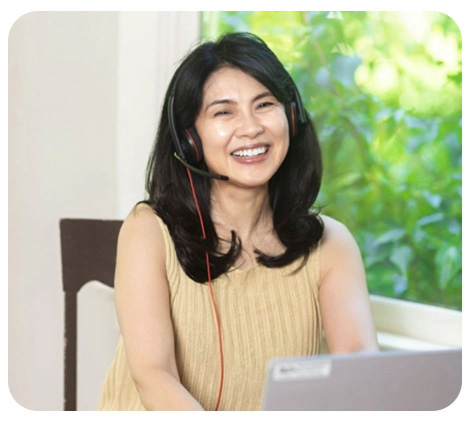
Established in 2021 as the world’s first fully comprehensive online Japanese language school, Oku Sensei’s Japanese (OSJ) stands out as the optimal method for learners of all levels—from beginners to advanced—to study Japanese online. OSJ is designed as a comprehensive, flexible, and cost-effective platform to meet the diverse needs of learners worldwide. By combining a structured approach with practical application and cultural integration, OSJ is an exceptional choice for mastering Japanese.
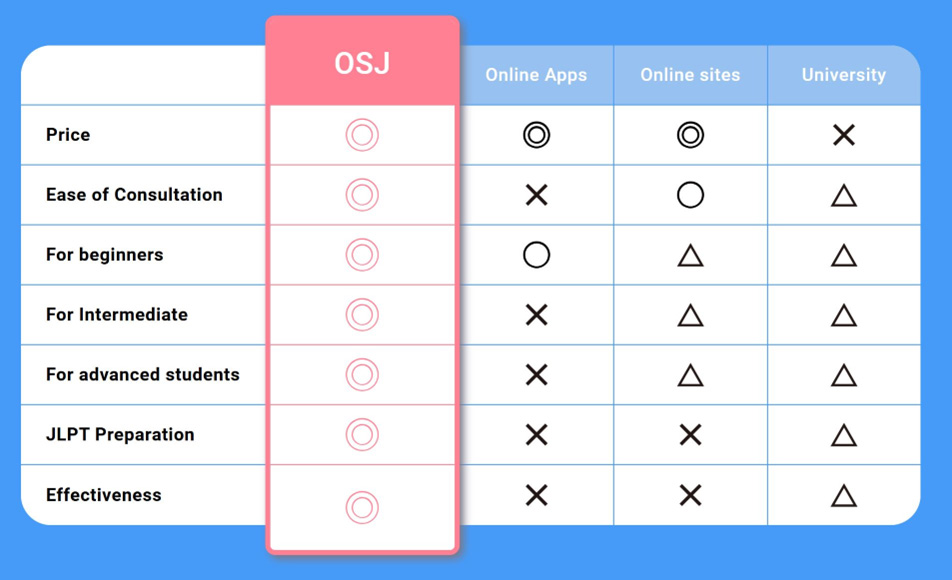
1. Comprehensive Curriculum for Practical Japanese
OSJ offers a well-rounded curriculum covering grammar, kanji, vocabulary, reading, writing, listening, and speaking at all levels, from beginner to advanced. Unlike many competitors, OSJ incorporates cultural nuances, history, art, food, and business Japanese into its lessons. This ensures students gain practical skills and knowledge that are relevant for daily life and career-related scenarios.
2. Tailored Course Structure
OSJ provides three programs tailored to the specific goals of learners:
- Japanese Discovery Program: For casual learners who want to study Japanese as a hobby.
- Standard Course: The flagship course for students who wish to develop practical Japanese skills for daily conversations, including reading and writing.
- Master Class: For advanced learners aiming to pass high-level JLPT exams (N2 or N1), use Japanese in professional business settings, or gain a deep understanding of Japanese culture, history, and current affairs.
Each program is flexible and can be adjusted to meet students' needs, including course schedules, frequency, semester length, and difficulty.
Explore the programs: Japanese Discovery, Standard Course, Master Class
3. Cultural Relevance
Learning a language is inseparable from understanding its culture. OSJ integrates lessons on Japanese customs, traditions, and societal values to deepen students’ understanding of the cultural background of the language.
This approach makes OSJ ideal for learners seeking personal enrichment or professional growth. OSJ also teaches the three main conversational styles—casual speech (kudaketa-hanashikata), polite speech (teineigo), and honorific speech (keigo)—equipping students with the skills needed for authentic communication in appropriate contexts.
4. Flexibility and Personalized Support
OSJ adapts to each student’s unique goals and schedules, providing tailored guidance to maximize progress. High-quality study materials are available for free, and group-based classes foster collaboration and motivation.
The platform’s flexibility allows students to register for or adjust courses as needed, making it accessible even for those with busy lifestyles.
5. Affordability and Accessibility
With lessons starting at just $20 and completely free study materials, OSJ ensures that high-quality Japanese education is accessible at an affordable price to learners worldwide. This commitment to value and accessibility sets OSJ apart from traditional institutions and high-cost platforms.
6. Robust Support System
Although OSJ offers group lessons, its support extends beyond basic language instruction. Students receive guidance in setting learning goals, organizing study plans, and even advice for transitioning to life or careers in Japan. This holistic support system helps ensure student success.
7. Why Choose OSJ?
Oku Sensei has over 20 years of teaching experience in universities across the United States. Drawing from this extensive background, OSJ combines the benefits of systematic learning with the flexibility of online education through a unique teaching method. Every student who studies at OSJ achieves remarkable progress, with many becoming fluent speakers of Japanese.
By addressing the challenges of other platforms, OSJ provides a comprehensive, practical, and culturally rich learning experience. For those serious about mastering Japanese and engaging with its vibrant culture, OSJ is the clear choice.
Conclusion
Choosing the right platform for learning Japanese depends on your goals, learning style, and level of commitment.
- Platforms like Preply and iTalki offer flexible and personalized conversation practice but lack structured learning plans and guaranteed results.
- Tools such as WaniKani and Duolingo excel in areas like kanji learning and beginner-level vocabulary but lack the depth needed for comprehensive language acquisition.
- Traditional schools like SNG and Akamonkai provide rigorous academic programs but are hindered by high costs and rigid schedules.
Oku Sensei’s Japanese (OSJ) stands out by offering a comprehensive curriculum, practical applications, cultural integration, and flexible education. OSJ addresses the limitations of other platforms and ensures high-quality Japanese education is accessible to learners of all levels at an affordable price.
For those serious about mastering Japanese and engaging deeply with its rich culture, OSJ is the clear choice.
Start learning with OSJ today and unlock your full potential.
If you’re considering learning Japanese online, feel free to take advantage of OSJ’s free 30-minute consultation:
Contact OSJ for your free consultation →


